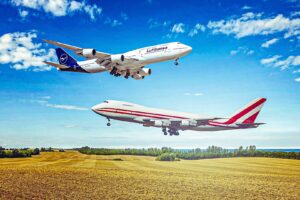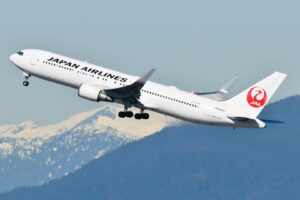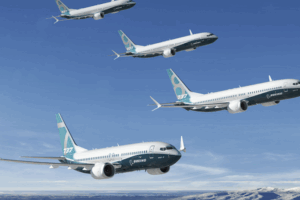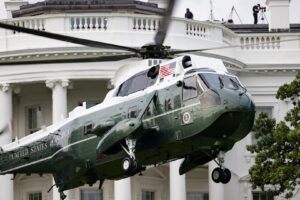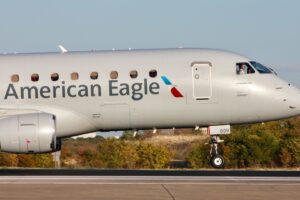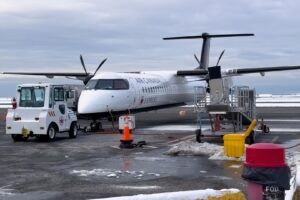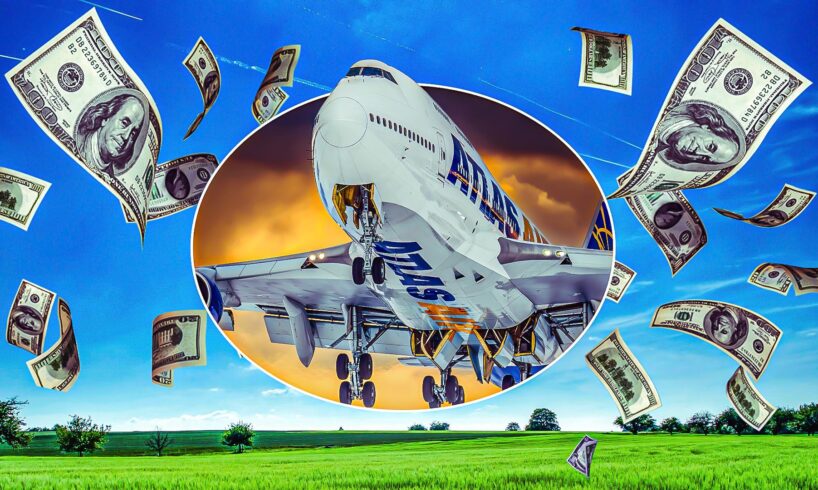
The Boeing 747-400 is the best-selling variant in the 747 program’s history, attracting almost 700 orders (passenger and freighter) over its production run. The aircraft integrated many advanced features for its day – most notably a full glass cockpit – along with significant enhancements in range, performance and fuel efficiency. As such, it became the premier long-haul aircraft of its era and was the largest commercial aircraft in history until the arrival of the Airbus A380.
Launch Customer(s)
Pan American World Airways
Manufacturer
Boeing
Aircraft Type
Widebody
First Delivery
January 22, 1970
While passenger versions of the 747-400 are pretty rare to see nowadays, the type is still a popular freighter, with ch-aviation data showing over 200 747-400 aircraft listed as active today. With plenty of aircraft still in service and many more in storage, there is an ample market for buying a 747-400. While the acquisition costs for a Boeing 747-400 might seem low compared to its initial price tag, it comes with a high yearly upkeep bill due to maintenance, fuel and other costs.
The Cost Of A Boeing 747-400 In 2025
Photo: Adrian Pingstone | Wikimedia Commons
As the Boeing 747-400 is no longer in production, it’s not possible to buy a new one directly from the Boeing factory. Therefore, the only option is the used aircraft market, where an airframe can be acquired at a significantly lower price than the original list price. Firstly, it’s important to clarify that second-hand aircraft can vary widely in terms of their condition – this means that, while an aircraft could be acquired for a cheap initial price, the cost of getting it airworthy can be considerably more than a plane that is already good to fly.
So, how much does a second-hand 747-400 cost? Well, they can be purchased for a little as $1 million, but such aircraft would need a huge amount of work to get airborne. If we are talking about an airworthy (or thereabouts) 747-400, then the cost will likely range between $10 million and $30 million.
Specification
Boeing 747-400
Length
70.60 m (231 ft 10 in)
Wingspan
64.40 m (211 ft 5 in)
Height
19.40 m (63 ft 8 in)
Max Takeoff Weight (MTOW)
396,900 kg (875,000 lb)
Cruise Speed
Mach 0.85 (913 km/h or 567 mph)
Range
7,285 NM (13,490 km)
Typical Seating (3-class)
416 passengers
Max Capacity
660 passengers
Various other factors will determine the price of the aircraft, including its accumulated flight hours and flight cycles, its interior condition and, of course, engineering and maintenance requirements to get it airworthy. The most expensive part of any aircraft is its engines, and the 747-400 needs four of them to fly. The 747-400 was sold with three different engine options – the Pratt & Whitney PW4000, the General Electric CF6, and the Rolls-Royce RB211.
What Was The 747-400’s List Price?
Photo: Eric Salard | Flickr
The 747-400 made its entry into service in February 1989 and attracted huge interest from carriers across the globe. Boeing’s list price for the 747-400 was over $260 million by the 2000s, a price tag that is cheaper than what the later Boeing 747-8 model would cost, even when adjusting for inflation.
However, it is well known that buyers typically do not pay the full list price, with aircraft manufacturers giving customers a significant discount on the full price. The size of the discount can vary from customer to customer, but generally speaking, larger orders would get a higher percentage off the price. Discounts could be greater than half off the list price for high-profile orders, meaning many 747-400 customers ended up paying around $130 million or less per unit.
While production on the first airframe began in 1987, the first 747-400 was delivered in early 1989, while the final aircraft in the series – a 747-400ERF freighter – was delivered to Kalitta Air in late 2009. The oldest 747-400 in service today is a Kalitta Air freighter, although this one was one of the earlier-built planes having rolled off the production line in 1989.
Related
Explained: The Key Differences Between The Boeing 747-400 & The 747-8
While the 747 variants are surprisingly similar in many ways, the newer model is larger, offers better performance, and increases efficiency.
The Cost Of Leasing A 747-400
Photo: Wirestock Creators | Shutterstock
A more convenient option for acquiring a 747-400 is to reach a leasing agreement, whether this is a long-term lease or a short-term by-the-hour agreement. Monthly leasing costs for a 747-400 are estimated at over $100,000, although this is just the base leasing fee and does not include extras like maintenance or insurance.
As for chartering a 747-400 as a private jet, Paramount Business Jets lists a price of $30,090 per hour, meaning customers would be paying over a quarter of a million for a long-haul flight!
The upsides of a leasing agreement are that the lessor will usually be in charge of maintenance, repair and overhaul (MRO) obligations and will have a better network to leverage in this respect. With spare parts for older aircraft becoming increasingly tough to source, buyers of a 747-400 can find it difficult to get enough parts to keep their aircraft airworthy.
Boeing 747-400 Operating Costs
Photo: MarcelX42 | Wikimedia Commons
While you might think that shelling out millions for an aircraft is a sizable enough cost in itself, the true ownership and operating costs of a giant jet like the 747-400 can soon dwarf the acquisition cost. In order to own and operate a 747-400, it will cost millions per year, likely breaking into the tens of millions with regular usage.
The 747-400’s fuel consumption is considerably higher than modern widebodies like the Airbus A350 or Boeing 787 Dreamliner. According to BBC Future Planet, the 747-400 burns fuel at a rate of around .09 gallons (four liters) per second, amounting to approximately 3,240 gallons (14,400 liters) per hour. With jet fuel now priced at over $2.30 per gallon as of June 20, 2025, this means a 747-400 would burn over $7,450 in fuel per hour. Other variable costs include crew salaries, airport fees and maintenance, giving the 747-400 an estimated hourly operating cost of over $25,000.
This is not counting the fixed costs of owning a jet, which include storage fees and insurance. As per a Simple Flying report, the 747-400’s typical fixed costs are estimated at around $850,000 per year, but these figures are based on 450 flight hours for private ownership. If an airline were flying the 747-400 all year round on a regular basis, the fixed costs would be much higher.
Who Still Flies The 747-400 In 2025?
Photo: Vytautas Kielaitis | Shutterstock
With the Boeing 747 program formally coming to an end in 2023, the Queen of the Skies is becoming more and more elusive in our skies, particularly as a passenger jet. There are currently just four commercial airlines operating scheduled passenger services with the 747 – Air China, Korean Air, Lufthansa and Rossiya Airlines. However, as Korean Air only flies the 747-8i, that leaves Air China, Lufthansa and Rossiya as the three remaining scheduled 747-400 operators.
German carrier Lufthansa has the world’s largest passenger 747 fleet, consisting of 19 747-8i and eight 747-400. Air China flies seven 747-8is (although two are VIP jets for the Chinese government) as well as two 747-400s, while Rossiya Airlines has a fleet of five 747-400s. The Aeroflot subsidiary recently reintroduced its jumbo jets into service this summer on its domestic network. Iranian carrier Mahan Air also has a single 747-400 aircraft in its fleet, but this is typically used for charter flights and is currently listed as parked.
Airline
No. of 747-400s
Lufthansa
8
Air China
2
Rossiya Airlines
5
Mahan Air
1 (parked)
As for the 747-400F, ch-aviation lists almost 180 aircraft as active, showing there is still a long life ahead for the 747 as a freighter. With over 100 freighters from the 747-8 series also in service today, the jumbo will likely be active for decades to come.
Related
This Is The Oldest Boeing 747-400 Still Flying
Kalitta Air’s Boeing 747-400F N740CK, built in 1989, is the oldest active 747-400 freighter still flying in 2025.
How Many 747-400’s Were Built?
Photo: Soos Jozsef | Shutterstock
The planemaker manufactured a total of 1,574 Boeing 747 airframes over the widebody’s 54-year production run. This started with the famous ‘City of Everett’ prototype (registration: N7470) – which remains on display at the Museum of Flight in Seattle – and ended with an Atlas Air 747-8F (N863GT) in December 2022. As mentioned previously, the 747-400 proved to be the most popular series in the 747 program, with a total of 694 airframes built.
The majority of these were the regular 747-400 passenger variant, although Boeing also built over 160 freighter versions and other specialist models, like a passenger-freighter combi and an extended range (ER) passenger version. British Airways was the largest customer of the 747-400 over the series’ production, ordering a total of 57 aircraft. However, in terms of overall 747 orders, Japan Airlines comes out on top with 108 jumbo jets, ranging from the 747-100 to the 747-400.
Variant
Units Built
747-400
442
747-400D
19
747-400ER
6
747-400M
61
747-400F
126
747-400ERF
40
Total
694
The next most popular series in the 747 family was the 747-200, which managed 393 sales. Compared to the original -100 series, the -200 featured more powerful engines and a 15% higher MTOW, allowing it to fly for longer. Japan Airlines was the largest customer for the -200 with 24 orders for the passenger model and seven for its freighter variant.

